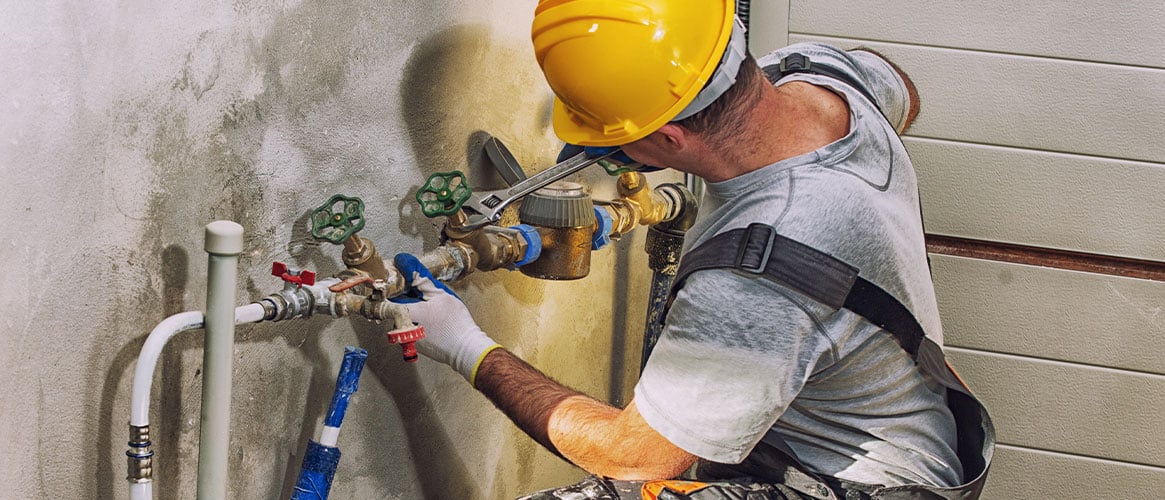Plumbers are exposed to a number of injury risks on the job—many of which are not always obvious when the work begins. Mold, asbestos, and lead paint are hazardous and not easily noticeable. And, working in confined spaces can make normally simple tasks less safe.
Help your plumbers understand these risk factors and to prepare for them to reduce the chance of possible injury.
Chemical and material hazards
Find out if the jobsite has asbestos, lead paint, or mold. If yes, the best practice is to bring in an abatement contractor to clear the area of these hazards before the planned plumbing work begins.
Chemicals plumbers use, like solder, adhesives, and solvents, can also be a hazard. Use Safety Data Sheets (SDS) to learn about the chemical properties, health hazards, and ensure your plumbers have the required personal protective equipment (PPE) and know when to use them. Remind them to wear gloves, coveralls, and wash their hands to avoid exposure. Also, remind them to decontaminate equipment after use.
Confined areas
Make sure your plumbers know how to identify confined spaces and confined space procedures. Avoid working in confined spaces that might not have enough oxygen. And, know that some gasses, like hydrogen sulfide from decomposing sewage, can build up over time. Use air monitors throughout the job to assure the air in the confined space is safe to breathe.
Slippery conditions
Plumbers work in wet environments, so wear appropriate footwear to avoid slips, trips, and falls. Make sure workers have sturdy shoes with a protective toe box and a non-slip sole. Work areas must be kept clear of clutter and equipment to make it easier to move around and avoid a fall.
Burn hazards
Workers can suffer burns from hot equipment parts, steam lines, and the release of hot water or steam. Use heat-insulating gloves and eye/face shields and make sure to drain pipes of hot water and steam before opening them up.
Electrical hazards
To avoid electric shock, only use power tools that are safe for a wet environment and that have a ground fault circuit interrupter (GFCI). And, if one of your employees feels tingling when touching a metal pipe, they must stop work immediately because the pipe may be conducting electricity.
Cuts and lacerations
Keep tools and equipment, and their safety features, in good working order. Keep cutting equipment sharp so it will work properly. Always cut away from the direction of the face and body to avoid cuts and punctures. Use eye protection when cutting or grinding to avoid eye injuries from flying particles.
Awkward positions
When working in awkward positions or performing repetitive manual tasks, plumbers are at risk of suffering musculoskeletal disorders. Use proper lifting techniques and keep the back straight while working. Try to rotate tasks and take a quick break every 30 minutes.
When plumbing, your workers must be aware of their surroundings and normally overlooked hazards that they may be exposed to. Work with them on identifying these situations and taking the necessary steps to prevent injury.
(Rev. 09/2025)
